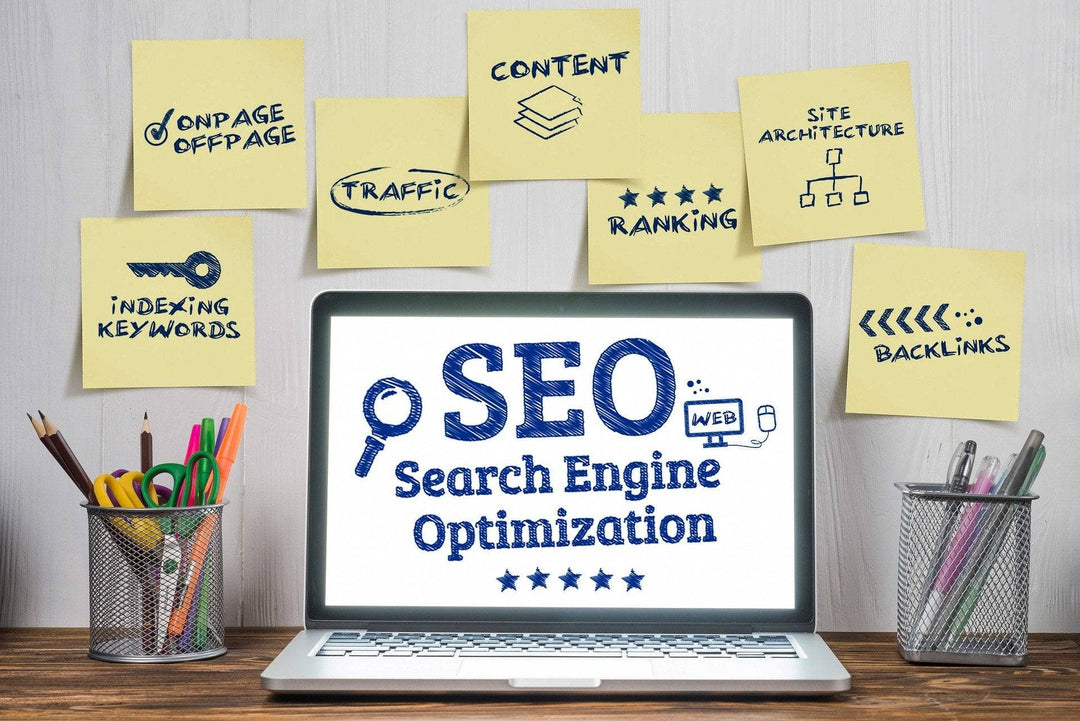Overview
This blog provides a comprehensive guide on optimizing your Shopify store for better visibility and traffic through effective eCommerce SEO strategies. Key topics include keyword research, on-page and technical SEO, link building, local SEO practices, and ongoing monitoring of SEO efforts. Implementing these practices can enhance user experience and drive conversions, ensuring long-term success in the competitive online marketplace.
Frequently Asked Questions
1. What is eCommerce SEO?
2. Why is keyword research important for Shopify SEO?
3. What are some on-page SEO optimization strategies for Shopify?
4. How can I improve my site speed on Shopify?
5. What is the significance of local SEO for Shopify businesses?
In the booming digital landscape, having an attractive Shopify store is just the beginning. Driving traffic to your eCommerce website demands superior SEO practices. Implementing effective search engine optimization strategies not only enhances your site's visibility but also ensures a seamless shopping experience for your potential customers. In this comprehensive guide, we will explore essential SEO techniques tailored specifically for Shopify to help boost your online store's traffic and conversions.
Understanding the Basics of eCommerce SEO
Before we delve into the nitty-gritty of Shopify's SEO tools and features, it’s crucial to understand what eCommerce SEO encompasses. At its core, eCommerce SEO is the practice of optimizing your online store to rank higher in search engine results, making it easier for potential customers to find your products.
This involves several layers of optimization, including keyword research, on-page optimization, technical SEO, and off-page tactics, ensuring you cater to what search engines like Google and Bing prioritize. As you optimize your Shopify store, remember that the ultimate goal is to enhance user experience while meeting search engine requirements.
Keyword Research: The Foundation of SEO
Effective SEO begins with thorough keyword research. To attract the right audience to your Shopify store, you need to identify the search terms potential customers use. Utilize tools like Google Keyword Planner, Ahrefs, or SEMrush to uncover keywords with significant search volumes and manageable competition levels.
Using Long-Tail Keywords
Incorporating long-tail keywords is a crucial part of the process. These are typically longer phrases that potential customers enter into search engines. For example, instead of solely targeting "shoes," consider phrases like "comfortable running shoes for flat feet." By using long-tail keywords, you can attract a more targeted audience, increasing the chances of conversion.
On-Page SEO Optimization for Shopify
Once you've identified your keywords, the next step is implementing on-page SEO strategies throughout your Shopify website. This includes optimizing your product pages, collections, and blog content for both users and search engines.
Optimizing Product Pages
Your product pages are where the magic happens. Here are some key optimization tactics:
- Unique Product Descriptions: Avoid using manufacturer-provided descriptions. Create unique, compelling descriptions that incorporate your researched keywords naturally.
- Optimized Title Tags: Ensure your title tags are descriptive and include primary keywords. Keep them under 60 characters for optimal display on search engines.
- Meta Descriptions: Write engaging meta descriptions that summarize the content of your product pages and entice users to click through.
- Image Optimization: Use high-quality images but also optimize them by compressing file sizes and providing descriptive alt text.
Enhancing Collection Pages
Collection pages should also be optimized for SEO. Here’s how you can do it:
- Clear URL Structure: Make your URLs clean and meaningful – for instance, use /collections/running-shoes instead of /collections/12345.
- Engaging Titles and Descriptions: Similar to product pages, your collection titles and descriptions should be keyword-rich to improve visibility.
- Internal Linking: Link between related products and collections to reduce bounce rate and improve user navigation.
Technical SEO on Shopify
While on-page SEO focuses on the content and layout, technical SEO ensures that your site meets the technical requirements of modern search engines. Shopify has some built-in features that can help with technical SEO, but you should also be proactive in this area.
Site Speed Optimization
Page speed is a critical factor in user experience and SEO rankings. A slow-loading site can lead to increased bounce rates, ultimately hurting your SEO efforts. To enhance site speed:

- Optimize images by compressing them without sacrificing quality.
- Limit the number of apps you install, as each additional app can add to the load time.
- Utilize Shopify’s built-in features, such as lazy loading images, to boost performance.
Mobile Responsiveness
With a significant number of users shopping on their mobile devices, prioritizing a mobile-responsive design is crucial. Shopify themes are generally mobile-responsive, but ensure that your elements are well-aligned and functioning seamlessly across different screen sizes.
XML Sitemap and Robots.txt
Shopify automatically generates an XML sitemap and a robots.txt file for your store, which helps search engines crawl and index your site effectively. Make sure to submit your sitemap to Google Search Console for better indexation.
Boosting Off-Page SEO Through Link Building
Off-page SEO refers to activities conducted outside your website to improve its position in search rankings. One of the most effective strategies is link building, which involves acquiring high-quality backlinks from reputable sources.
Creating Shareable Content
Investing in valuable content is key to earning links naturally. Consider these content strategies:
- Blogging: Regularly publish informative and engaging blog posts related to your niche. Optimize these posts for search engines and promote them via social media.
- Guest Blogging: Write guest posts for relevant blogs in your industry, ensuring you include a link back to your Shopify store.
- Collaborations: Partner with influencers or brands in your niche to create content that links back to your site.
Leveraging Local SEO Practices
If your Shopify business operates locally, don’t neglect local SEO strategies. This includes optimizing your store for geographically relevant searches.
Creating a Google My Business Account
By creating a Google My Business (GMB) listing, you can enhance your visibility in local search results. Here’s how to optimize your GMB account:
- Enter complete and accurate information, including your address, phone number, and business hours.
- Add images of your products and shop to capture user attention.
- Encourage customers to leave reviews and respond to them to build credibility.
Utilizing Local Keywords
Incorporate local keywords into your product descriptions and blog content. For example, if your Shopify store is located in Austin, you might use phrases like "best shoes in Austin" within your content.
Monitoring and Adjusting SEO Strategies
SEO is not a one-time task but a continuous process. Regular monitoring and adjustments are essential to ensure long-term success. Here are some tools and methods to track your progress:
- Google Analytics: Use this tool to track user behavior, traffic sources, and conversions on your Shopify store.
- Google Search Console: Monitor your site’s performance in search results, identify any errors, and see how well your keywords are ranking.
- SEO Audit Tools: Utilize tools like Ahrefs, SEMrush, or Moz to conduct regular SEO audits and identify areas for improvement.
Perplexity Search Optimization: A Game Changer
With search algorithms constantly evolving, it’s essential to consider perplexity search optimization in your strategy. This technique focuses on enhancing content diversity and readability to meet the needs of modern search engines effectively. Prioritize creating in-depth content that addresses various user queries related to your products, engaging their interest while keeping them informed.
Turning Insights into Action
Implementing SEO best practices on your Shopify store may seem daunting at first, but the rewards are well worth the effort. By adhering to the strategies outlined in this guide, you can significantly enhance your store's visibility and attract more potential customers. Remember that SEO is not just about rankings; it's about creating an engaging experience for your visitors.
As you refine your SEO strategy, stay updated on the latest trends and adapt your practices accordingly. The dynamic nature of eCommerce and search engine algorithms means that what works today may evolve tomorrow. By being proactive and committed to continuous improvement, you can position your Shopify store for lasting success in the competitive online market.
Linked Product

eCommerce SEO
The eCommerce SEO Pro Plan offers comprehensive support for enhancing your Shopify store's visibility. With initial optimization of your homepage and additional pages, along with monthly reports and keyword research, it provides ongoing insights to refine your strategy. This plan also includes content creation and backlink opportunities to further strengthen your site's performance in search rankings.
View ProductExplore another user's Shopify or Wix store by following this link to their store. Keep in mind that this is a promotional link, and we assume no responsibility for the content of the linked store.






Leave a comment